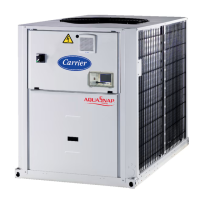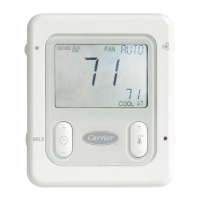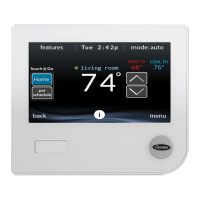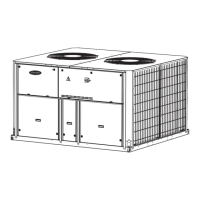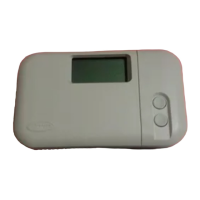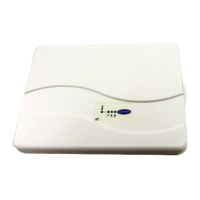6.16 - Desuperheater option
30RBM/RQM/RBP/RQP units may be tted with a desuperheater
that allows for better energy management. The desuperheater is
used to extract the high pressure, high temperature heat from the
refrigerant to “desuperheat” it to a lower pressure refrigerant. The
vapour that goes into the desuperheater is not fully condensed;
therefore, the refrigerant vapour must be channelled to a separate
heat exchanger where the condensing process occurs.
Note that the desuperheater is enabled when the Desuperheater
demand contact is closed. For units with EMM option, there is also
an output used to command a desuperheater pump.
To set minimal condensing setpoint
1. Navigate to the Main menu.
2. Select Setpoint Conguration (SETPOINT).
3. Set Desuperheat Min SCT [min_sct].
Desuperheat Min SCT [min_sct]
24 to 50°C 40°C
75 to 122°F 104°F
6.17 - Defrost cycle for heat pumps
When the outside air temperature is low and the ambient humidity
is high, the probability of frost forming on the surface of the outdoor
coil increases. The frost covering the outdoor coil may decrease
the air ow across the coil and lead to lower performance of the
unit. To remove the frost from the coil, the control initiates the
defrost cycle when necessary.
During the defrost cycle, the circuit is forced into the cooling mode.
To prevent the water loop from cooling down, optional electric
heating may be started. The defrost cycle lasts until the end of
defrost temperature is achieved.
6.18 - Free defrost for heat pumps
Free defrost is used in order to eliminate a relatively small amount
of frost that has formed on the surface of the coil. Contrary to the
standard defrost session; in the case of the free defrost session the
heat (energy) is absorbed from the air. When running the free defrost,
fans are activated and compressors are turned off. The free defrost
is most efcient when the outside air temperature is above 1°C.
IMPORTANT: In the case of a large amount of frost covering
the coil, the standard defrost cycle will be started.
6.19 - Master/slave assembly
The control system allows for master/slave control of two units
linked by the CCN network. The master unit can be controlled
locally, remotely or by network commands (CCN), while the slave
unit remains in Network mode.
All control commands to the master/slave assembly (start/stop, setpoint
selection, heating/cooling operation, load shedding, etc.) are handled
by the unit which is congured as the master. The commands are
transmitted automatically to the slave unit.
If the master chiller is turned off, while the master/slave function
is active, then the slave chiller will be stopped. Under certain
circumstances, the slave unit may be started rst to ensure that
the run times of the two units are equalised.
In the event of a communication failure between the two units,
each unit will return to an autonomous operating mode until the
fault is cleared. If the master unit is stopped due to an alarm, the
slave unit is authorised to start.
IMPORTANT: Master/slave assembly can be congured only
by Carrier service.
6.20 - Brine options (option 5, option 6)
30RB/RQ units offer a few different cooler uid types, including
standard water uid as well as the optional brine uid, i.e. medium
brine (option 5) and low brine (option 6). The brine option is
commonly used for low temperature applications.
NOTE: This option requires the Software Activation Key
(see section 6.23).
6.21 - BACnet option (option 149)
The BACnet/IP communication protocol is used by BMS or the
programmable controllers to communicate with the control.
NOTE: This option requires the Software Activation Key
(see section 6.23).
6.22 - Modbus (option 149B)
The Modbus communication protocol is used by the building
management system or the programmable controllers to
communicate with the SmartView control. Modbus communication
settings (Modbus RTU or Modbus TCP).
NOTE: This option requires the Software Activation Key
(see section 6.23).
6 - STANDARD CONTROL OPERATIONS AND OPTIONS
44
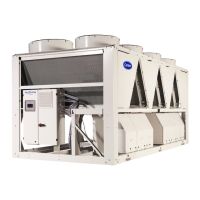
